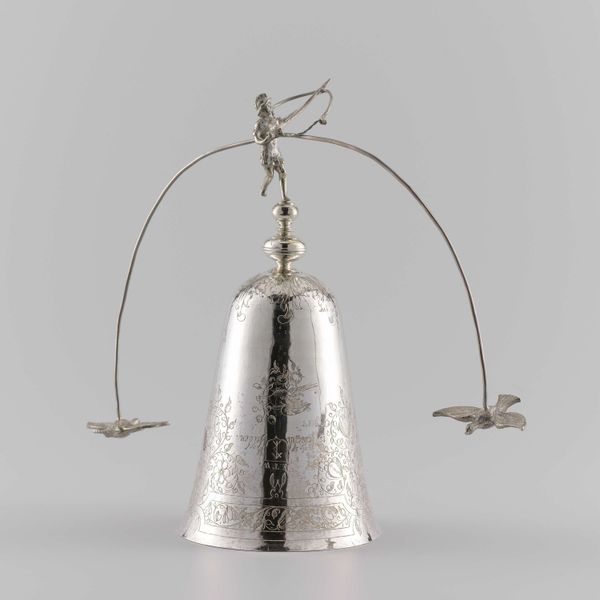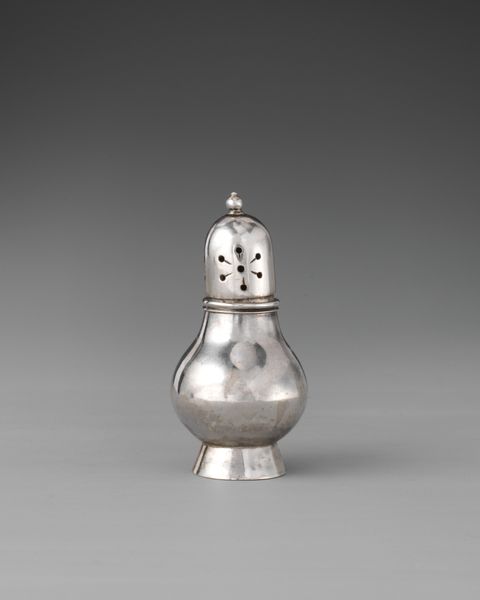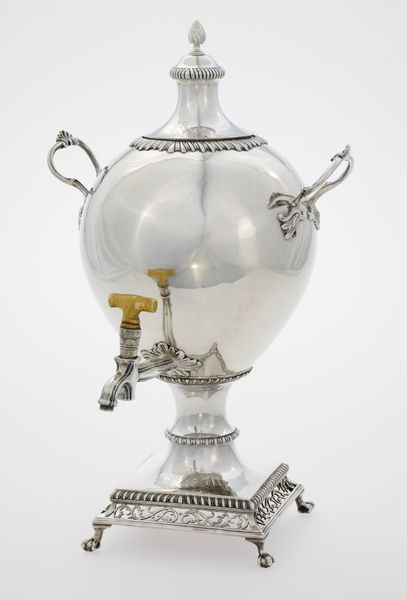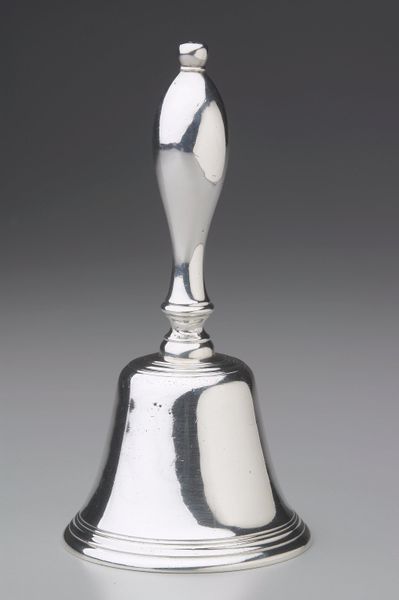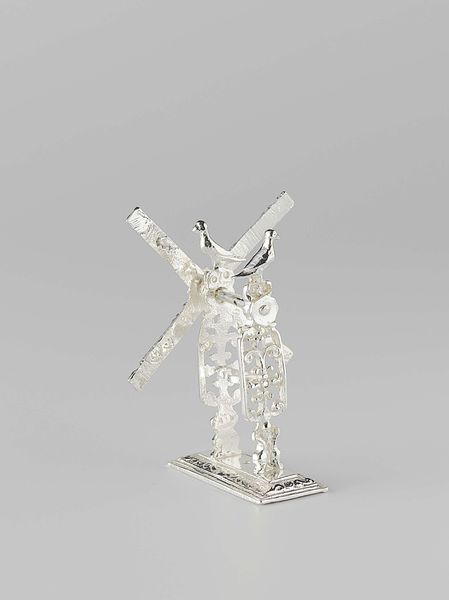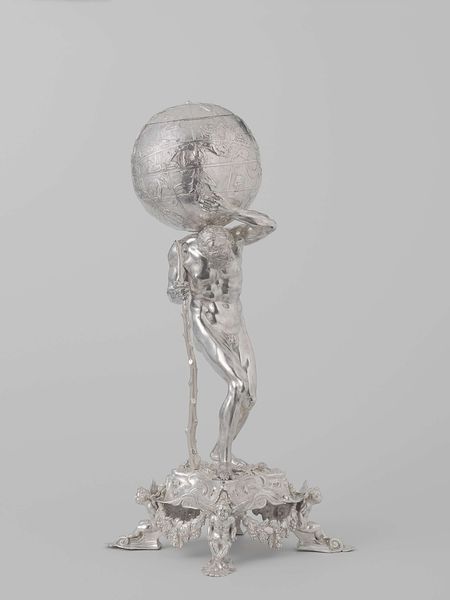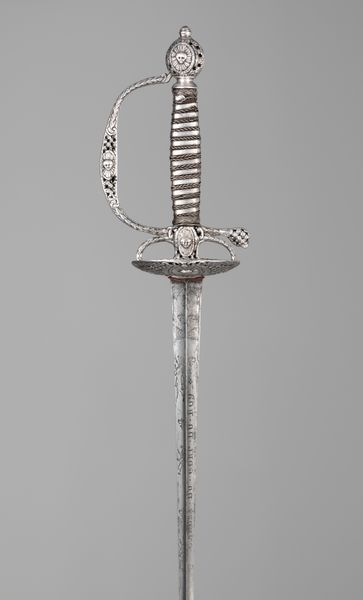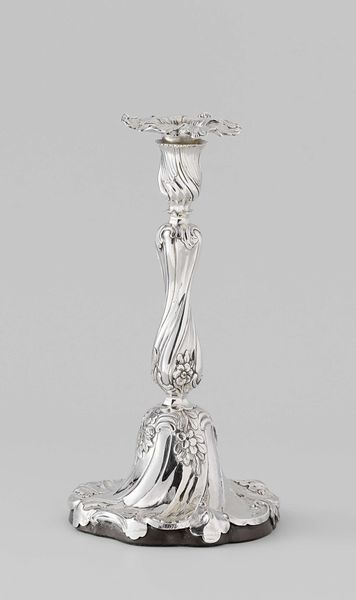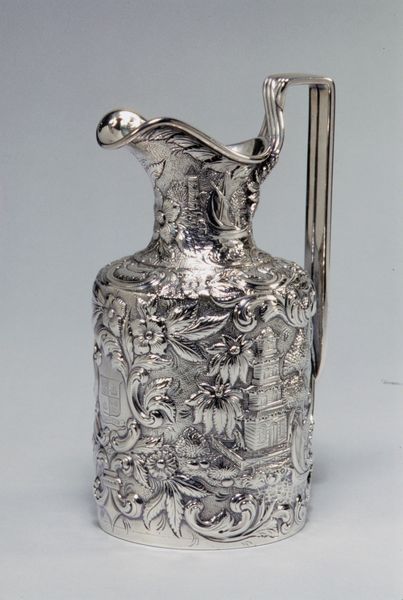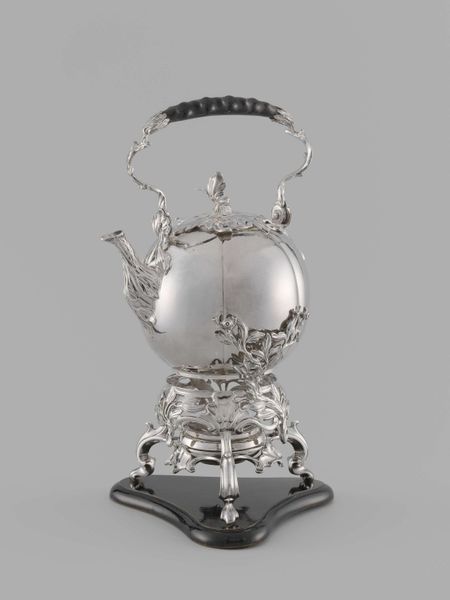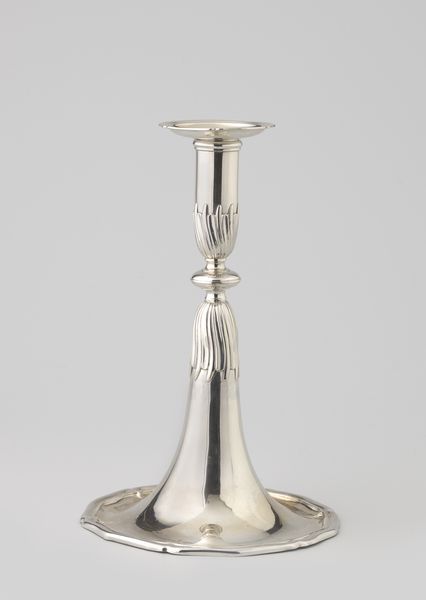
silver, metal, sculpture
#
silver
#
baroque
#
metal
#
sculpture
#
decorative-art
Dimensions: height 24.5 cm, diameter 8.5 cm
Copyright: Rijks Museum: Open Domain
Editor: Here we have a 'Molenbeker van gedreven zilver', or windmill beaker in chased silver, crafted in 1662 by Reynier Hendriksz. van Hassel. It strikes me as a fascinatingly playful object, this miniaturized windmill atop a bell-shaped cup. How would you interpret its cultural significance? Curator: It's a compelling piece, isn't it? These “windmill beakers” were common in the Netherlands, and tell us so much about Dutch society in the Golden Age. What do windmills symbolize for you? Beyond a picturesque image? Editor: I think of industry, land reclamation, and perhaps a unique Dutch identity. Curator: Exactly. Windmills weren’t merely functional; they represented Dutch ingenuity and control over their environment, essential for their economic power at the time, mostly around the grain industry. Now, think about who might have been using a silver cup like this. Editor: Likely the wealthy, I suppose, using it for… celebratory drinks? Curator: Precisely. So, it's not just a display of wealth but also a nod to the very source of that wealth. There's a fascinating tension here – a celebration of both labor and leisure. Think about it – whose labor powered the economy and built that wealth? And who wasn’t included in the image of prosperity? Editor: That makes me look at it in a different way. It becomes almost a symbol of societal contradictions, that perhaps ignores class divides or who exactly is benefitting from that labor, then? Curator: Precisely. And that understanding allows us to see decorative arts objects as documents deeply embedded in power dynamics. How does this lens change your perception of similar pieces? Editor: I guess I'll be paying a lot more attention to the unspoken stories within seemingly decorative objects. Thank you.
Comments
No comments
Be the first to comment and join the conversation on the ultimate creative platform.
